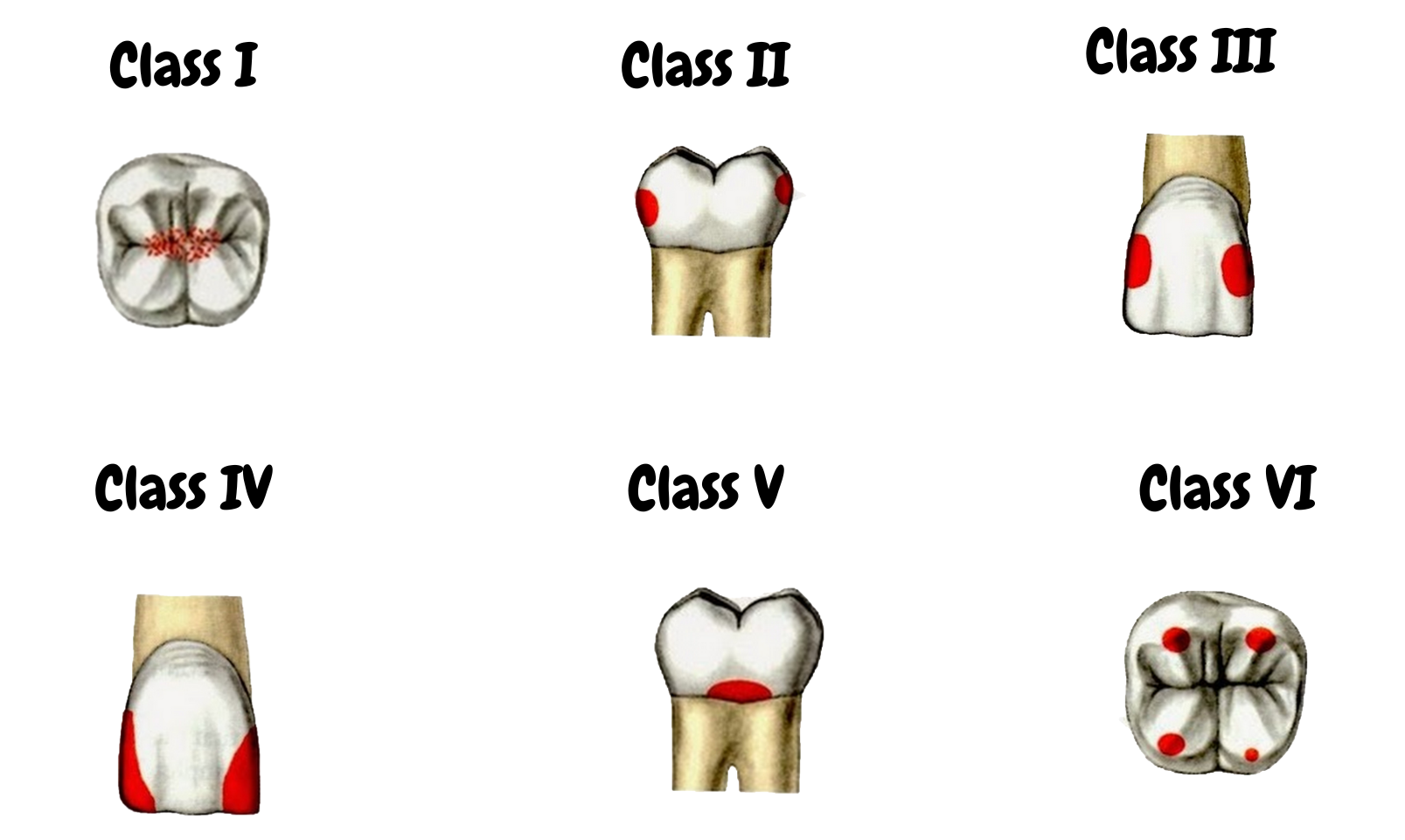Classification of Dental Caries | Types & Severity Explained by Dr. Mohamad Hassoun
Dr. Mohamad Hassoun

Caries is classified by location (e.g., Black's classification) or by severity (e.g., initial, moderate, advanced).
Black's classification describes where the decay is, with Class I in pits and fissures, Class II on the proximal surfaces of molars/premolars, Class III on the proximal surfaces of incisors/canines (not involving the edge), Class IV on the proximal surfaces of incisors/canines (involving the edge), Class V on the smooth, gumline surfaces, and Class VI on cusp tips. Severity classifications grade the extent of the demineralization, from initial (enamel only) to deep, complicated caries (involving the pulp).

By location (Black's Classification)
Class I: Decay in pits and fissures on the occlusal (chewing) surfaces of molars and premolars, and the lingual pits of incisors.
Class II: Decay on the proximal (side) surfaces of molars and premolars.
Class III: Decay on the proximal surfaces of anterior teeth (incisors and canines) that does not involve the incisal edge.
Class IV: Decay on the proximal surfaces of anterior teeth that does involve the incisal edge.
Class V: Decay on the cervical (gum) third of the facial or lingual (cheek or tongue) surfaces of any tooth.
Class VI: Decay on the incisal edges of anterior teeth or the cusp tips of posterior teeth. This class was added by a later dentist, W.J. Simon.
By severity
Initial Caries: Demineralization that may be visible as a white spot, but has not yet broken through the enamel's surface. It can often be reversed with improved hygiene and fluoride.
Superficial/Enamel Caries: The decay has penetrated the enamel but not the dentin.
Moderate Caries: The decay has reached the dentin and spreads out underneath the enamel.
Deep Caries: The decay is in the dentin, close to the pulp chamber.
Deep Complicated Caries: The decay has reached the pulp, creating an open pulp cavity.